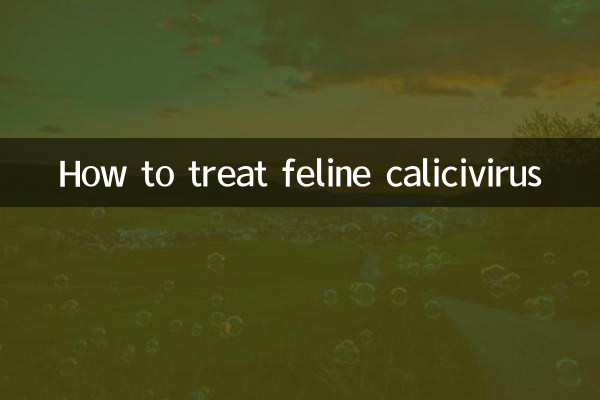How to treat feline calicivirus
Recently, feline calicivirus (FCV) infection has become a hot topic of concern among pet owners. As one of the common respiratory diseases in cats, the virus is easily spread through direct contact or environmental pollution, causing symptoms such as sneezing, oral ulcers, and fever. The following will be combined with hot discussions across the Internet in the past 10 days to provide structured data from three aspects: symptom identification, treatment methods and preventive measures to help cat owners respond scientifically.
1. Common symptoms of feline calicivirus

Cats infected with feline calicivirus usually exhibit the following symptoms, the severity of which varies between individuals:
| Symptom type | Specific performance | Frequency of occurrence (reference) |
|---|---|---|
| respiratory symptoms | Sneezing, runny nose, eye discharge | More than 80% of cases |
| oral problems | Gingivitis, mouth ulcers, decreased appetite | 60%-70% of cases |
| systemic symptoms | Fever, lethargy (drowsiness), joint pain | 30%-50% of cases |
2. Treatment methods and drug selection
There is currently no specific cure for feline calicivirus, but symptoms can be relieved and recovery promoted by:
| Treatment direction | Specific measures | Things to note |
|---|---|---|
| Symptomatic treatment | Antibiotics (such as clavulanate and amoxicillin) to prevent secondary infections | Veterinary guidance is required to avoid abuse |
| nutritional support | Supplement lysine and vitamin B complex | Can be mixed into wet food or used as nutritional paste |
| oral care | Rinse with saline or use pet mouthwash | Avoid irritating medications |
| Severe treatment | Intravenous infusion, interferon therapy | Only implemented in hospitals |
3. Preventive Measures and Hot Questions and Answers
According to recent discussions on pet medical platforms, the following prevention methods have been frequently mentioned:
1.Vaccination:Core vaccines (such as FVRCP) can reduce the risk of infection, and kittens need to be vaccinated according to the program.
2.Environmental disinfection:Use sodium hypochlorite (1:32 dilution) to clean cat litter boxes, food bowls, etc.
3.Isolation management:Households with multiple cats need to isolate sick cats for at least 2 weeks to prevent group spread.
Hot questions and answers:
Q: Can feline calicivirus be transmitted to humans?
A: No zoonosis cases have been found so far, but hygiene needs to be paid attention to.
Q: Will cats carry the virus for life after recovery?
A: About 50% of recovered cats may be poisoned for a long time and require regular physical examinations.
Summary
Treatment of feline calicivirus requires a combination of symptom-supportive therapy and strict prevention. If your cat has persistent high fever or refuses to eat, seek medical attention promptly. Through scientific management and vaccination, the impact of diseases on cat health can be effectively reduced.

check the details

check the details